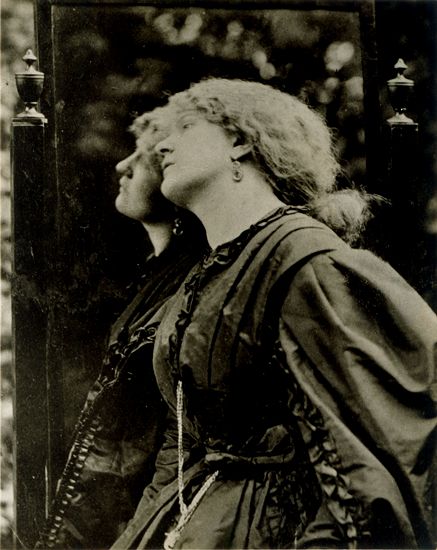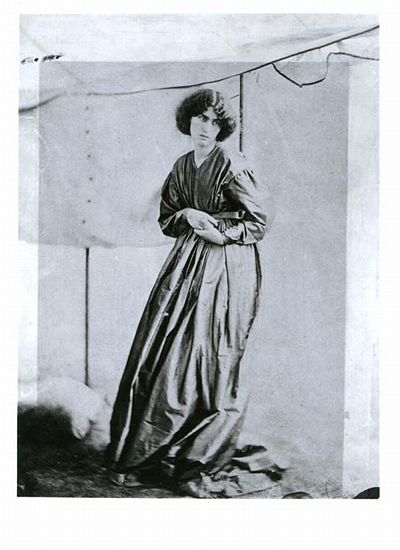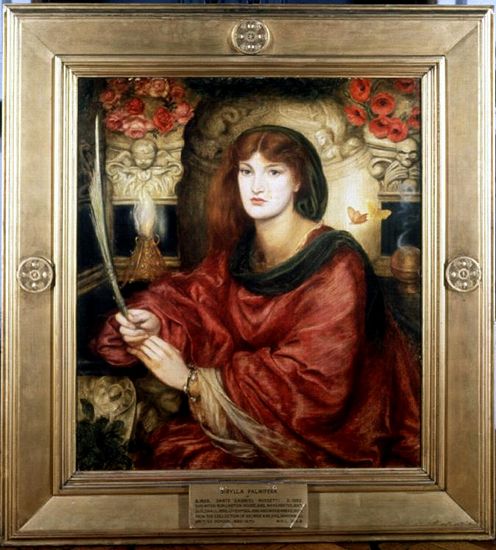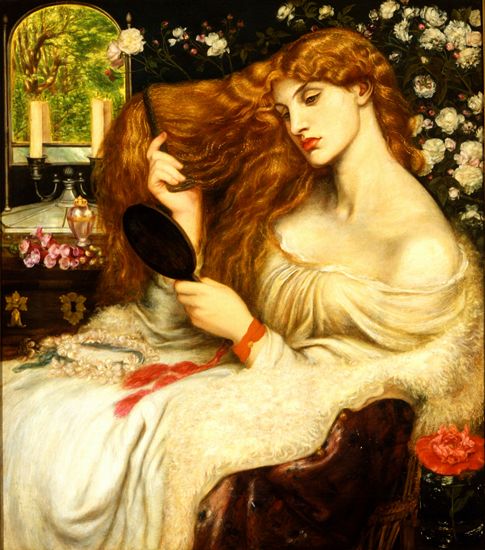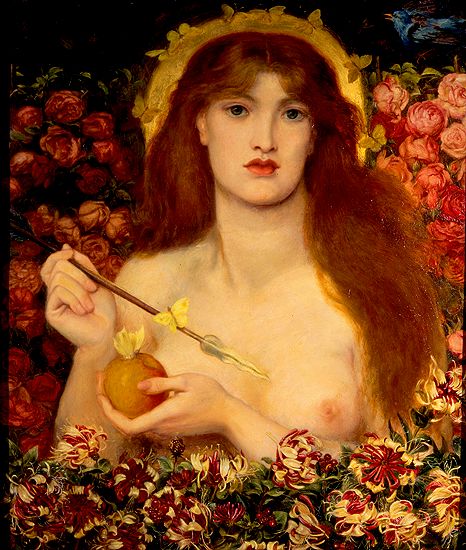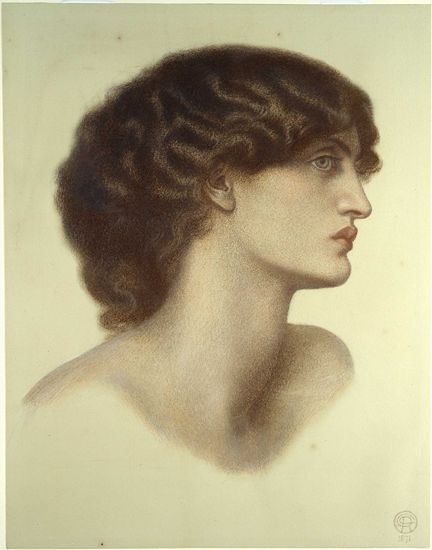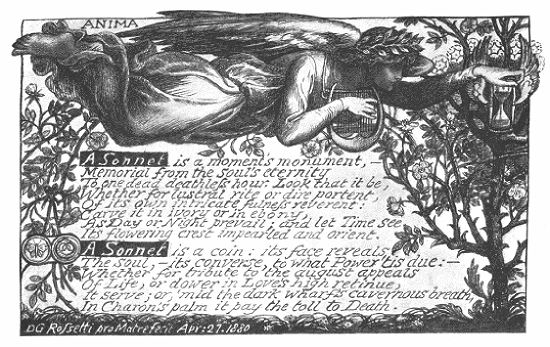An Introduction to D.G. Rossetti
Jerome J. McGann
University of Virginia
For the remainder of his life he would be surrounded by accumulating darknesses, and he would gradually break with some of his closest and most loyal friends. But out of the nightmare world that gradually arose in the midst of his growing public success and suffocating middle class luxury, Rossetti created a series of literary and pictorial works of great power and significance.
In 1866 and 1867 he wrote two sonnets for recent pictures- the poems now known as "Soul's Beauty" and "Body's Beauty", which appeared in print in 1868, along with another sonnet for a picture, "Venus Verticordia". The poems restored him to a sense of the importance of his poetry, which he began to take up again in earnest. The activity stimulated his old desire to see his original writings in print. His eye problems further induced him to shift his principal creative activity from art to literature. Since much of this poetry had been buried with Elizabeth, and since Rossetti kept no copies of some of his most important works, the grisly scheme to exhume the volume was set in motion. In the end the book was recovered for Rossetti by some friends. In 1869 he began recopying and revising these older works and adding new poems to them. He had these works printed up "for private circulation" in a series of proofs and so-called trial books, and eventually he gathered the lot together and published his 1870 volume of Poems.
The book was a stunning success. It was also the occasion of one of the most famous literary controversies of the century when it was reviewed in 1871 by Robert Buchanan in the pseudonymous essay "The Fleshly School of Poetry - Mr. D.G. Rossetti", in the Contemporary Review. Buchanan's main charge, that Rossetti's volume was full of indecencies, started a furious series of further attacks, defenses, counterattacks, and general public clamour. Rossetti himself entered the fray with an essay of self-defense, "The Stealthy School of Criticism", which he published in The Athenaeum in December. None of this did any serious damage to Rossetti's celebrity, and indeed Buchanan would, after Rossetti's death, all but completely recant his original position.
|
The 1870 Poems were put together, and many new ones written, after Rossetti moved from London to Barbara Bodichon's country house Scalands, near Robertsbridge, Hastings. Rossetti moved there in March 1870 to escape his claustrophobic London existence. Soon Jane and William Morris came to visit him. Jane stayed on for nearly the entire period of his sojourn, which ended on May 9. In those two months she would stamp his new book with her presence. In a biographical point of view the volume is dominated by Rossetti's two great love obsessions - his old love, Elizabeth, now dead and enshrined to an imaginative heaven; and the new love, Jane Morris, whose very earthly existence seemed to bring Rossetti back to life. Between 1871 and 1874 the relationship between Rossetti and Jane Morris achieved an extreme intensity. Much of the time Rossetti spent at the Morris's house at Kelmscott, and much of that time William was not at home. The poetry Rossetti wrote largely focusses on his love for Jane Morris. But in the end the romantic idyll began to dissipate, and finally Jane left Kelmscott with her family in July 1874. |
|
With that separation the final phase of Rossetti's life is inaugurated. It is a period during which Rossetti's eccentricities, manias, and hallucinations began to gain a dominating hold on his existence. Although he continued to paint, and in fact produced some astonishing works, he often seemed to be filling up, or out, his time. In 1880-1881 he had a renewed burst of poetical work as he prepared to issue a new and augmented edition of his 1870 volume. This was to include a new version of his masterwork "The House of Life" now twice the size of the 1870 version. He had also written several long ballads. The body of work proved so large, in fact, that he eventually decided two volumes should be published. These were the Ballads and Sonnets and the "new edition" of Poems. Both appeared in 1881. Rossetti's devoted brother William Michael called this last phase of Rossetti's life "the chloralized years". His health broken and his mind continually transacted by various guilts and regrets, Rossetti slowly died into his death. After his last volumes were published he made two vain efforts to restore his health. He went to the Lake District in the fall of 1881 and later, on doctor's advice, went to stay with a friend at his country house in Birchington. There he died. |


